Publications
Articles, publications, books, tools and multimedia features from the U.S. Institute of Peace provide the latest news, analysis, research findings, practitioner guides and reports, all related to the conflict zones and issues that are at the center of the Institute’s work to prevent and reduce violent conflict.
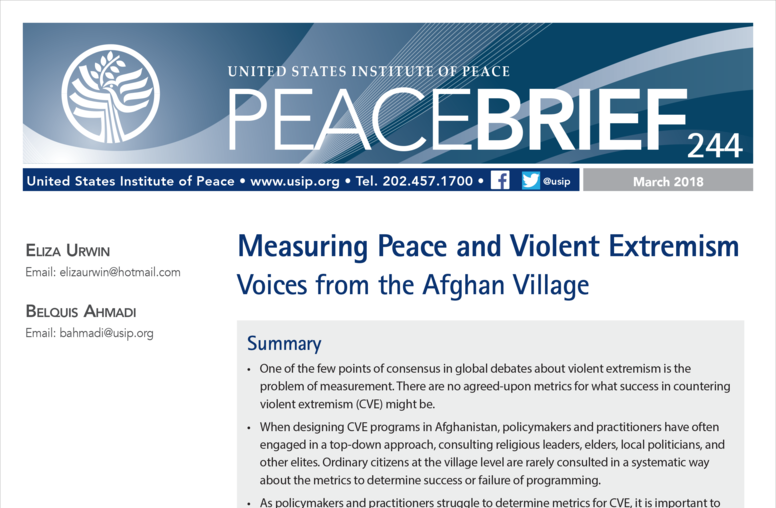
Measuring Peace and Violent Extremism
Policymakers and practitioners have often engaged in a top-down approach in the design of programs to counter violent extremism in Afghanistan. This top-down approach relies heavily on the insights of religious leaders, elders, politicians, and other elites while failing to incorporate...
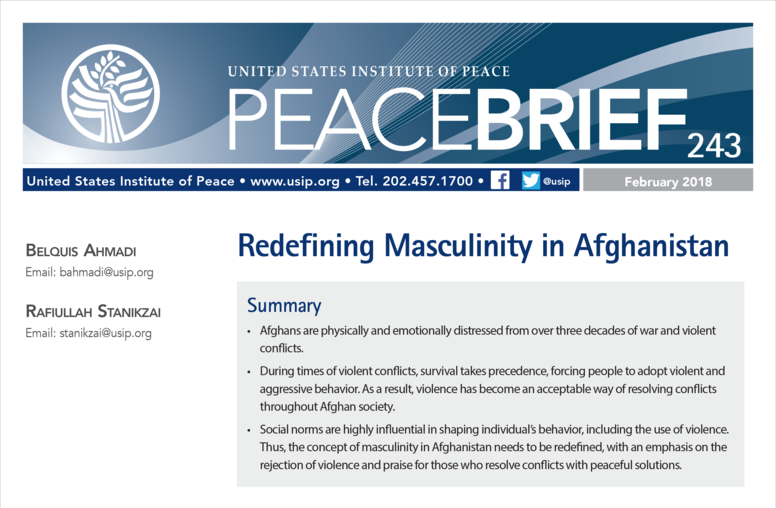
Redefining Masculinity in Afghanistan
Following more than three decades of political instability, violent conflicts, and foreign invasions, Afghanistan is home to nearly two generations that have grown up knowing only conflict and war. As a result, violent and aggressive behavior—particularly from young men—has become an accepted norm of...
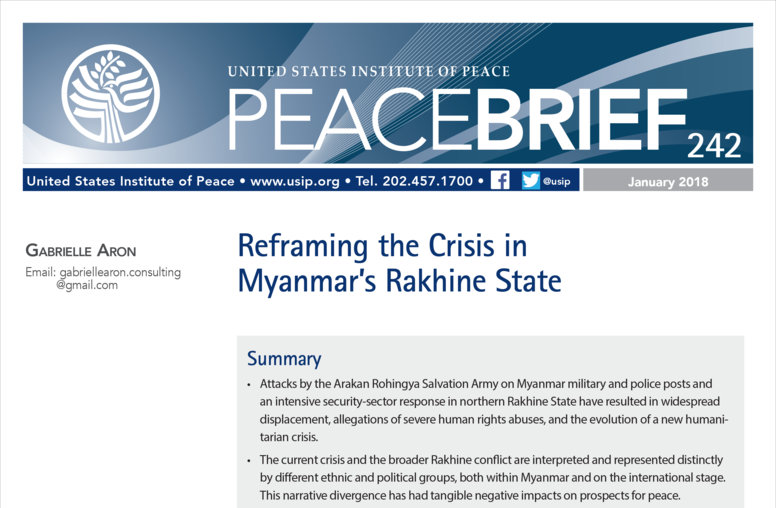
Reframing the Crisis in Myanmar’s Rakhine State
In the aftermath of attacks by the Arakan Rohingya Salvation Army and subsequent military clearance operations, two competing narratives have emerged. One frames the attacks as a critical threat to national security and the majority cultural-religious status quo. The second focuses on the human cost...
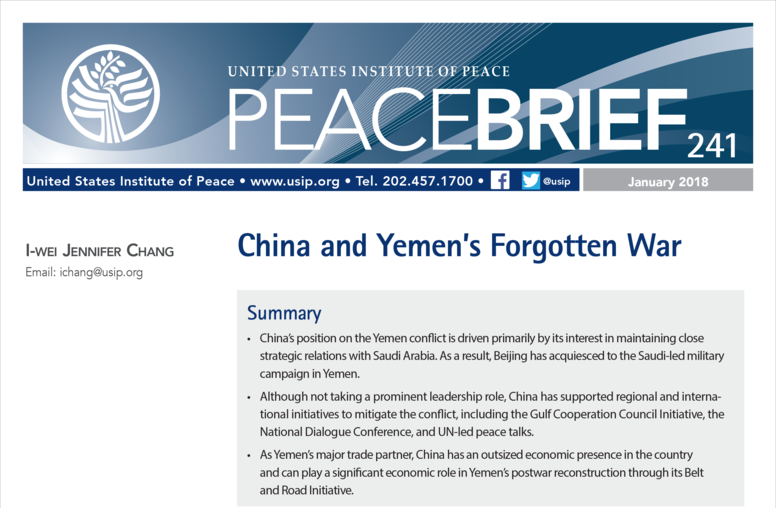
China and Yemen’s Forgotten War
Yemen is facing an acute humanitarian crisis after nearly three years of civil war, with more than 10,000 deaths and three-quarters of the country’s population in dire need of humanitarian assistance. Although eschewing a leadership role, China has supported regional and international efforts to mitigate the...
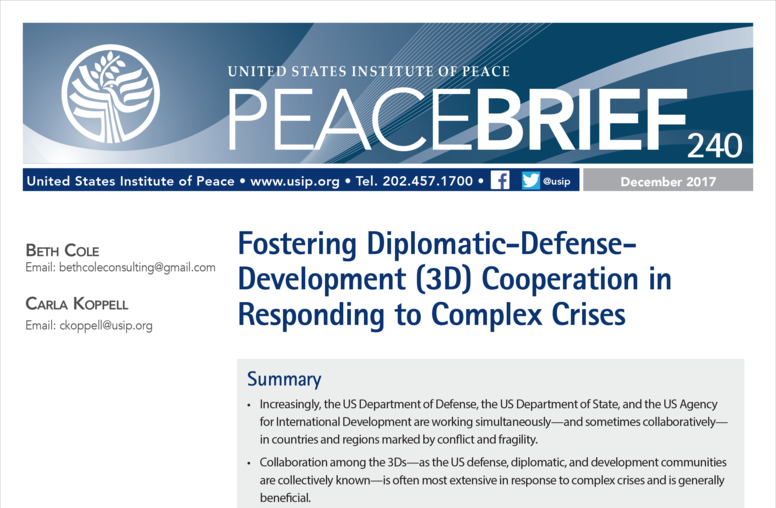
Fostering Diplomatic-Defense-Development (3D) Cooperation in Responding to Complex Crises
The US diplomatic, defense, and development communities (known as the “3Ds”) increasingly find themselves working together to tackle complex crises. This collaboration has already proved its worth, but how can it be made even more effective? A recent USIP research project sought to...
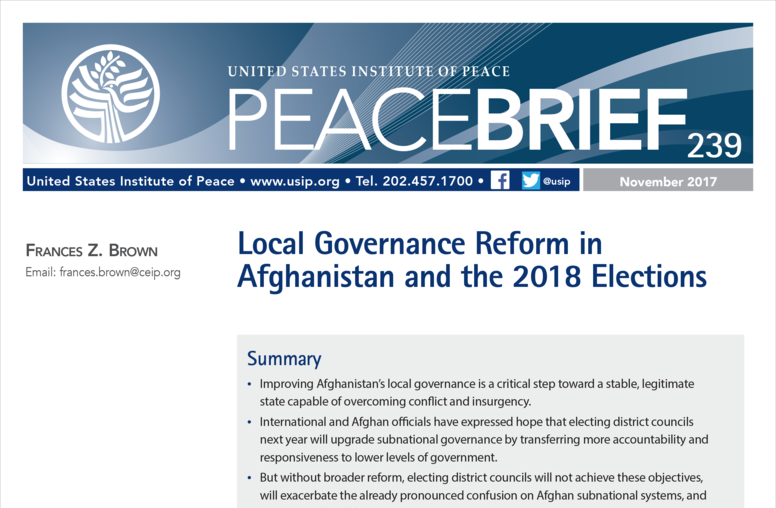
Local Governance Reform in Afghanistan and the 2018 Elections
This summer, Afghanistan’s Independent Electoral Commission announced that its long-delayed elections to launch district councils will be held in July 2018. The international community has formally welcomed the statement, noting that district councils are both long overdue and a manifestation...
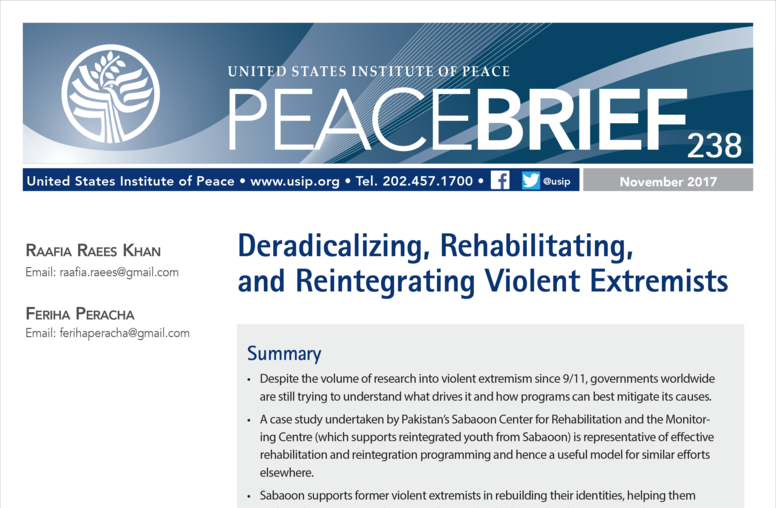
Deradicalizing, Rehabilitating, and Reintegrating Violent Extremists
Despite the increasing body of research on violent extremism, questions remain about why individuals join such groups and why recidivism remains common among those who have undergone deradicalization
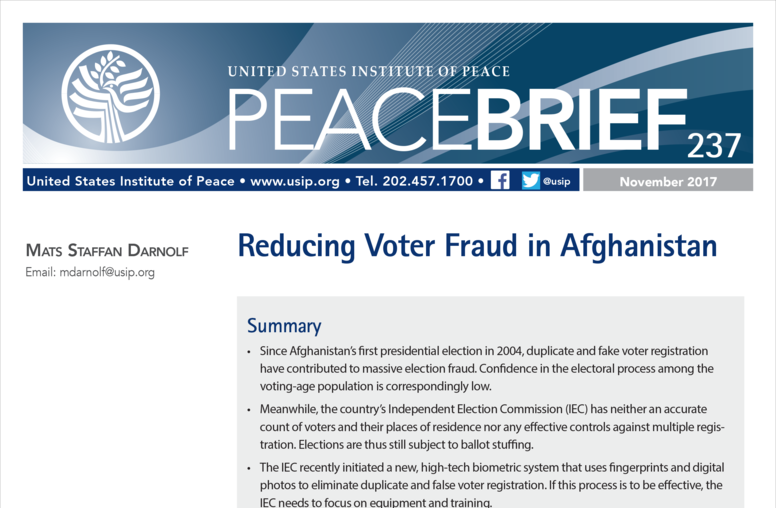
Reducing Voter Fraud in Afghanistan
Since Afghanistan’s first presidential election in 2004, massive election fraud and malpractices have been the rule. Confidence in the electoral process among the population is correspondingly low. As this Peace Brief explains, a new biometric voter registration system has...
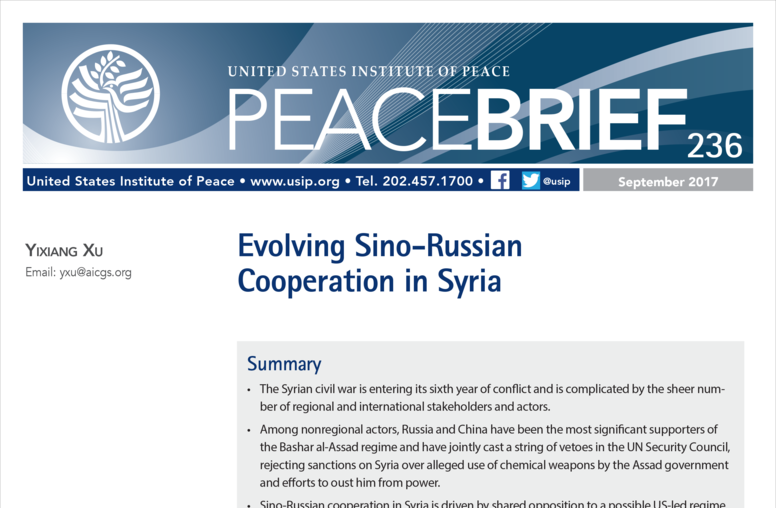
Evolving Sino-Russian Cooperation in Syria
Sino-Russian alignment in support of the Assad government in Syria is driven primarily by the mutual goal of preventing regime change and halting the spread of Islamic extremism. However, because Chinese strategic priorities lie elsewhere and Russia’s tactic of protracting military conflict in Syria contradicts Beijing’s long-term strategic interests, the prospect of future Sino-Russian cooperation in Syria is limited. This Peace Brief examines the forces driving this cooperation as well as its limits.
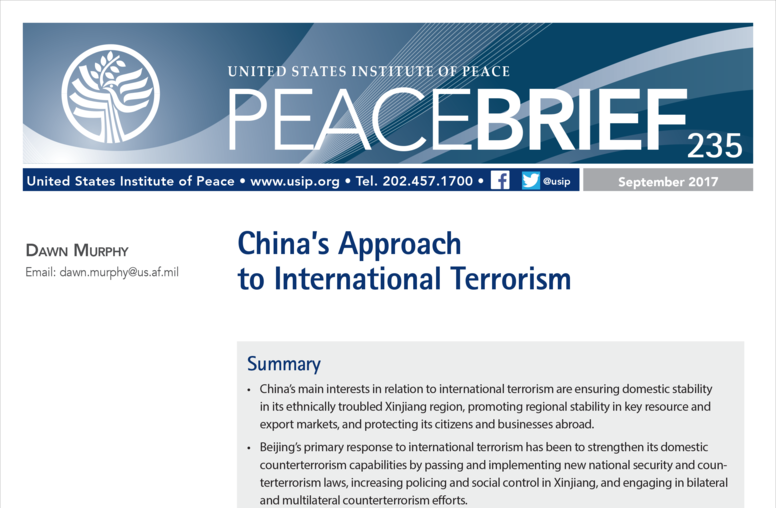
China’s Approach to International Terrorism
As China’s role in global political and economic affairs has expanded, so has its exposure to international and domestic terrorism. At the same time, it is constrained in its response by two long-held principles—nonintervention and noninterference. This Peace Brief discusses the threats to China, its response, and how these might affect its participation in global counterterrorism efforts.